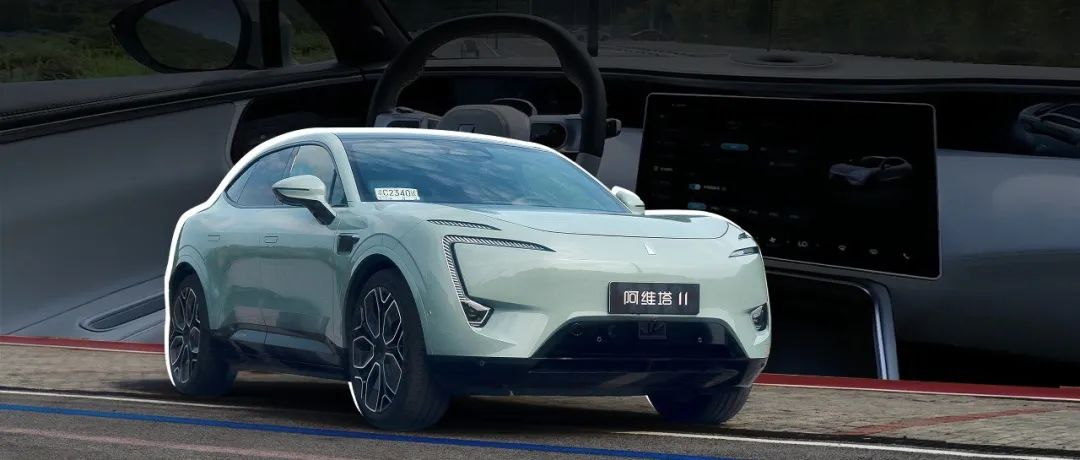Author: Zheng Senhong
The mystery of the Avita 11 has finally been unveiled: starting at a price of 349,900 yuan, the first deliveries will begin at the end of this year.
Avita 11, a model jointly created by Chang’an, Huawei, and CATL, has once again brought together influential figures such as Zhu Huarong, Xu Zhijun, and Zeng Yuqun.
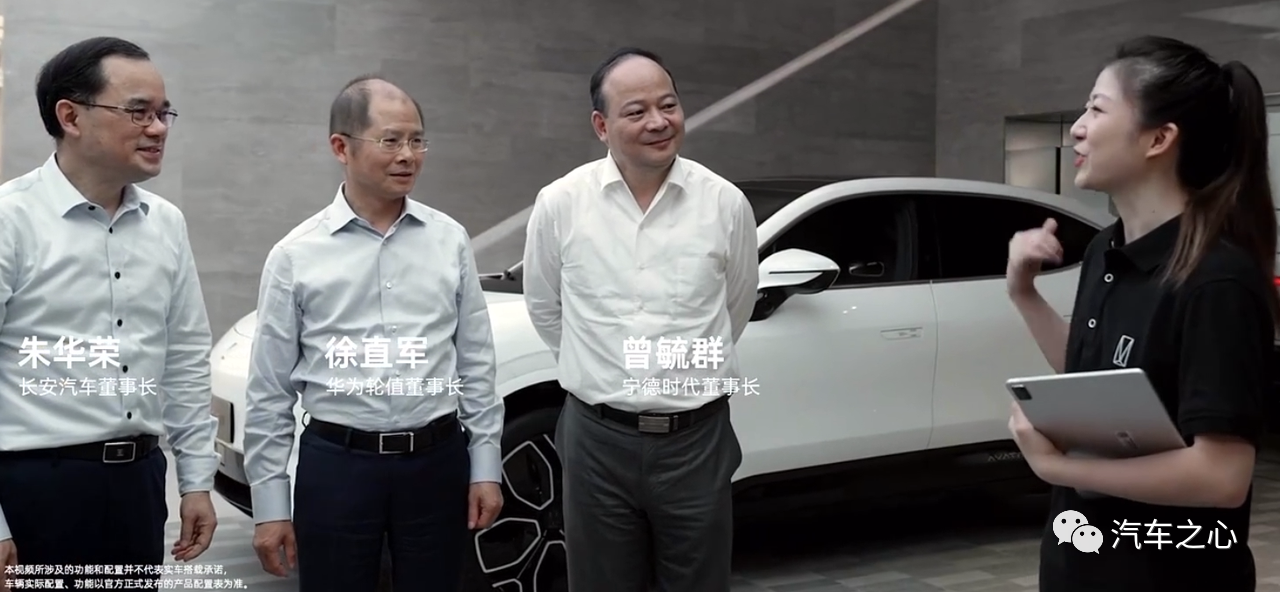
- Long-range dual-motor version (90D): 349,900 yuan
- Long-range dual-motor luxury version (90D): 369,900 yuan
- Ultra-long-range dual-motor luxury version (116D): 409,900 yuan
- Avita 011 limited edition (collaboration version): 600,000 yuan (limited to 500 units)
According to the plan, the two long-range versions and the Avita 011 limited edition will begin deliveries in December of this year, and the ultra-long-range version will begin deliveries in the first quarter of 2023.
The joint appearance of these three giants not only means the phased achievements of the Avita brand but also signifies the continued deepening of cooperation among the three parties.
Regarding the first model under the Avita brand, CEO Tan Benhong believes that the Avita 11 is the culmination of scientists, engineers, and artists.
Avita’s “Three Ceilings”
There are many brands that claim to be upmarket concepts, such as RisingAuto Automobile, which claims to be a “high-end pure electric smart mobile space,” and Voyah Automobile, which claims to be a “high-end intelligent electric vehicle,” among others. These innovative concepts are more of the breakthrough points for traditional automakers’ transformation.
However, Avita, positioned as a high-end intelligent electric vehicle, did not choose high-end or luxury words as its brand positioning, but instead chose to emphasize “emotion.”
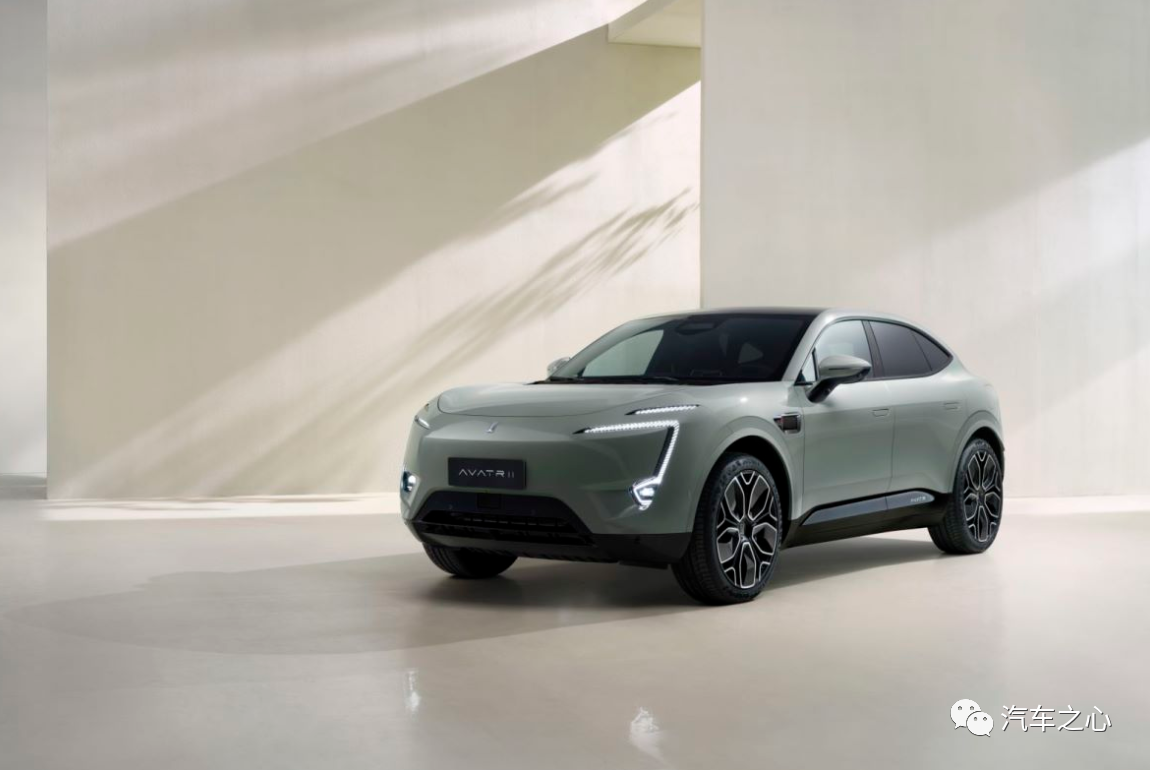
Tan Benhong believes that the market currently lacks an emotional intelligent electric vehicle, and Avita is such a brand that can realize it.The seemingly intangible emotional card of Avita is not a new trick to exploit users. According to Avita’s brand pillars, the three core values are luxury, futurism, and warmth, with “intelligence” as the cornerstone. This idea supports the brand’s core “emotion” and introduces the “E.I. User Needs Theory” for the first time. In other words, Avita emphasizes that technology has warmth and understands human nature.
If the text level cannot directly showcase Avita’s brand concept, design becomes the best expression. As the Chief Design Officer of Avita Technology, Nader Faghihzadeh is highly skilled at finding a balance between aesthetics and functionality, heritage and innovation. In the past 20 years, Nader has led the interior design of the fifth-generation BMW 7 series, which is considered one of the most beautiful BMW interiors ever, and also led the interior and exterior design of the BMW iX prototype car i Next Vision.
Today, Nader has applied this unique approach to the overall design of Avita 11. The sharp and exaggerated lighting group, golden ratio of the side face, beautiful curves, and distinctive tail window are the essence of Avita 11’s design. It is futuristic and approachable.
Three sets of data best demonstrate that Avita 11 in the 350,000-450,000 RMB price range is the most aesthetically tense smart electric SUV. First, the ratio of Avita 11’s wheelbase reaches 0.61, which is accurate to a millimeter with the Golden Section ratio of 0.618. This ratio not only makes the cross-border SUV body more slender but also guarantees the vertical space inside the cabin.
Second, Avita 11’s width-to-height ratio is 1.23, and the ratio of wheel height is 0.48, which is almost the design thinking or template of many supercars in the past. These two sets of data make Avita 11’s body more low and domineering.
Returning to the interior, Avita 11’s high-end luxury tone is evident. The Vortex Emotional Eddy located in the center of the cabin symbolizes the neural center of Avita 11, which is also the starting point for the emotional interaction between the entire cabin and the user.On the functional level, the laser-engraved circular ambient lamp of the Avita 11 can communicate with other ambient lamps in different ways, such as following music rhythm, voice linkage, and welcoming light effects.
In short, the design concept of Avita 11 is based on bold and confident nonconformity, and the emotional energy conveyed through human intelligence. “No compromise” is the bottom line emphasized by Tan Benhong in Avita’s design.
Wang Jun, COO of Huawei Intelligent Automotive Solution BU, said that Avita did not compromise on its styling, which put pressure on us. Today, the styling of Avita 11 is very beautiful, and the laser radar is not only not ugly but also the finishing touch.
If the appearance guaranteed only the first impression of Avita 11’s distinctive features in the industry, then intelligence and performance will be the ace that leads it to the mainstream competition track.
Different from the emerging forces of car-making and traditional car manufacturers’ cooperation with the Internet, behind Avita are independent brand leader Changan Automobile, Huawei leading the ICT industry, and power battery leader CATL, who jointly created an intelligent electric vehicle brand.
The three strategic partners played to their strengths: Changan ensured quality assurance, Huawei made the entire vehicle more intelligent, and CATL made the power more powerful.
It is precisely this connectivity at the bottom of the design, as well as the full-line connectivity of the vehicle’s intelligent driving domain, cockpit domain, and power domain, that maximizes the advantages of the three parties’ expertise.
For example, Huawei’s role is not just to achieve the HiCar intelligent network function; the Huawei HI Full-Stack Intelligent Automotive Solution will be more deeply integrated, with broader capabilities and applications in Avita 11.
As a model of joint research and development with Huawei, Avita 11 will perfectly demonstrate the core advantages of the CHN Intelligent Electric Vehicle Technology Platform in the field of “smart driving.”
Avita 11 is fully equipped with:
- Three 96-line Huawei laser radars;
- Six millimeter-wave radars;
- Twelve ultrasonic radars.- 13 high-definition cameras (4 forward-facing, 4 side-facing, 1 rear-facing, and 4 surround-view cameras);
- In addition, the Avita 11 is equipped with the Huawei MDC 810 Intelligent Driving Platform with a maximum computing power of 400 TOPS, which enables the Avita 11 to achieve seamless integration for high-speed, urban, and parking scenarios with its powerful software and hardware capabilities.
- Wang Jun stated that Huawei’s direction is moving towards higher-level intelligent driving, but safety is the core of intelligent driving.
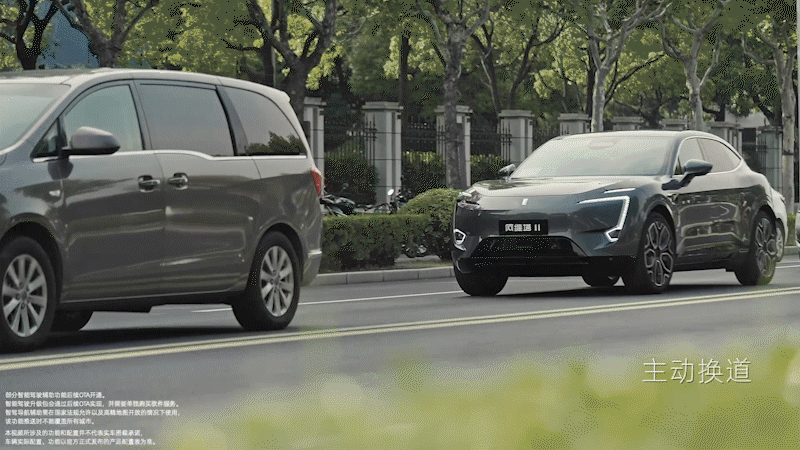
- According to the plan, the high-speed NCA and intelligent parking scenarios will be delivered as is, while the urban NCA is expected to be pushed in the first quarter of 2023.

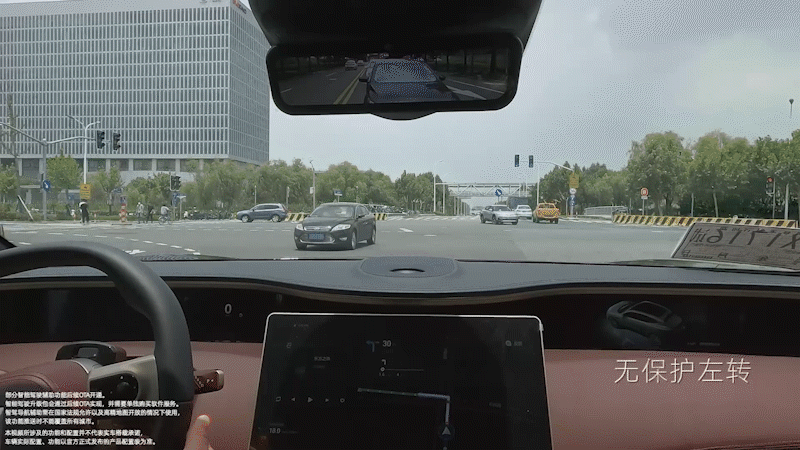
- From the on-site video, the Avita 11’s urban NCA will include auxiliary functions such as active lane change, close-distance merging and avoidance, active pedestrian right-of-way, traffic light recognition, and unprotected left/right turns.
- Tan Benhong believes that the Avita 11’s intelligent driving is at the ceiling in the SEV category of 350,000-450,000 RMB.
- In addition, Avita 11’s performance benefits from Huawei’s electric powertrain and CATL’s power battery.
- The Avita 11 is equipped with a Huawei DriveOne dual-motor four-wheel drive system with a maximum power of 425 kW and a 0-100 km/h acceleration time of 3.98 seconds.
- Wang Jun revealed that in the early stage of Avita’s development, Huawei actually prepared a four-motor program, but considering the entire vehicle design, battery layout, and cost, the final decision was made to use the dual-motor program. It cannot be ruled out that future models will adopt a four-motor program to enter the 2-second club.
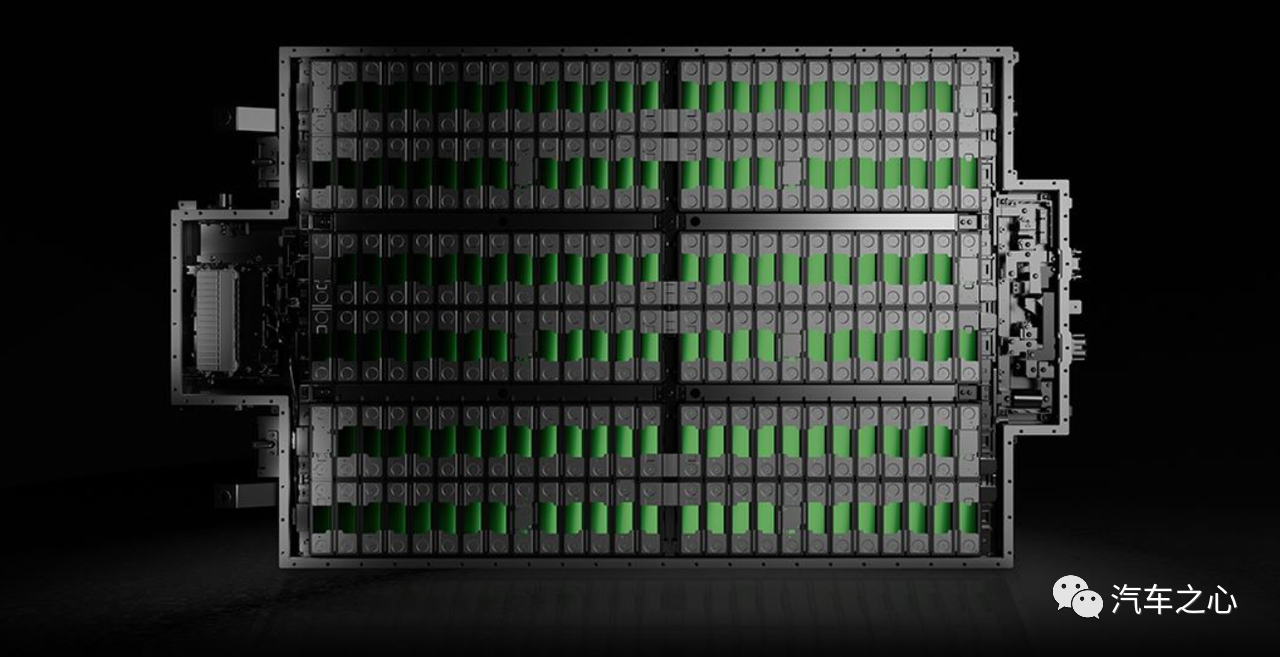
- The power battery is equipped with CATL’s three-element lithium-ion battery pack, adopting CTP2.0 high-efficiency integration technology, and respectively equipped with 90-degree and 116-degree battery packs. The energy density of the whole battery pack is 180Wh/kg and 190Wh/kg, ranking among the top in the industry.Ningde Times has equipped the Avita 11 with industry-leading electrification technology, such as super fast charging and NP self-isolation, becoming the first domestically produced high-voltage 3-element 2.2C fast charging battery. It can be charged for 10 minutes and travel up to 200 kilometers, perfectly integrating high performance, long battery life, and safety into the Avita 11.
Tan Benhong stated that in terms of power performance, high voltage charging capability, acceleration performance, and battery pack capacity, the Avita 11 has comprehensive performance which is the ceiling in the 350,000 to 450,000 RMB price range.
Indeed, there are hardly any domestic competitors that are more luxurious than the Avita team. From what we see now, the Avita 11 has almost no significant shortcomings in terms of its hardware foundation.
Who is Avita 11’s competitor?
Even with the top-tier technology in the automotive industry, it does not necessarily mean that Avita 11 is invincible. In the context of intense competition in product quality in the domestic market, Avita 11’s market performance still has uncertainty.
Who is Avita 11’s competitor?
The CHN platform has three major capabilities: “new architecture, strong computing, and high-voltage charging”. Only if a corresponding model can be found on the market, it can be considered Avita 11’s competitor.
In short, Avita 11’s competitors need to have the abilities of high scalability, high performance, long battery life, high safety, strong computing, high intelligence, and evolvability.
With the development of the pure electric vehicle market and technology, the development of dedicated platforms has gradually become the mainstream of future technology. More and more car companies have started to invest heavily to promote electrification transformations, including pure electric platforms at their center.
However, not all pure electric platforms can have the ability to deploy the four major domain controls: powertrains, vehicle control, intelligent cockpit, and intelligent driving, like the CHN platform.
For example, overseas traditional car companies such as General Motors’ Ultium, Hyundai’s Pure Electric E-GMP, and Volkswagen’s MEB platform, their focus is more on platform scalability, performance, and safety.# Comparison between Avita and XPeng’s EV Platforms
Looking at the domestic automobile market, although companies such as Geely’s SEA architecture, BYD’s e-platform 3.0, and GAC’s GEP 3.0 platform have the ability to combine “new architecture, strong computing, and high voltage charging,” their product progress is clearly later than Avita’s CHN platform.
Of course, this does not mean that Avita 11 does not have competitors. Although traditional car companies have reserved some power in their transformation, they cannot ignore the presence of new forces in the industry.
According to Tan Benhong’s selection criteria, XPeng G9 is the only competition that can compete with Avita 11 head to head, both positioning themselves as mid-to-large-sized SUVs, having new architecture, strong computing, and high-voltage charging.
Aside from the layout of the latest generation electrical architecture, XPeng G9 will be based on an 800V high-voltage SiC platform, enabling it to achieve the effect of supercharging for five minutes and a replenishment range of over 200km, although it is still under planning.
Looking at Avita’s progression, it plans to cover 19 cities by the end of 2023 and establish more than 100 high-voltage fast charging stations, making it the first intelligent electric vehicle brand to have a large-scale layout of high-voltage charging networks in China.
In terms of product strength, Avita 11 has similar data performance with XPeng G9, whether it is the intelligent cockpit or the level of intelligent driving, both are at the mainstream top tier.
In terms of brand effects, XPeng has already delivered 200,000 vehicles, and its brand influence is obviously higher than Avita’s, which came later. However, with Ningde Times and Huawei’s empowerment, perhaps Avita will only be behind XPeng in terms of market scale.
Choosing XPeng G9 as the only front-runner that is comprehensive enough in terms of product strength is simply because both have similar composite product power, but taking any individual product dimension and comparing it with mainstream models, Avita 11 is also not inferior.
In terms of performance, Avita 11 is better than Tesla Model Y’s high-performance version regardless of motor power or battery capacity.
Regarding the level of intelligence, Avita 11 can compete with NIO ES7 and Li Xiang’s L9, and it is not inferior in terms of software and hardware levels or actual performance.
By comparing and building relationships with competitors, this may help Avita 11 quickly establish its market effect, which is a marketing shortcut.There are many similar cases, such as how Mercedes-Benz emphasizes luxury and BMW’s “sport” is more prominent in consumers’ minds. Additionally, when Tesla Model 3 is mentioned, most consumers also automatically think of BYD Han and XPeng P7.
For newcomers like Avita, having top-tier competitive strength is a shortcut to quickly break into the consumer circle.
The Battle for New Luxury
In the era of traditional fuel vehicles, luxury brands have undergone a century of natural selection and basically have “solidified their class.”
But since the emergence of Tesla, and even after NIO’s average transaction price surpassed BBA, many domestic new energy vehicle companies have not only seen the opportunity to surpass established automakers but also the hope of challenging the high-end market.
The traditional automakers that were suppressed during the era of fuel vehicles, such as BAIC’s Arcfox, SAIC’s IM, Dongfeng’s Seres, and Geely’s Zeekr, are grasping tightly to this hard-won opportunity.
Avita, a brand launched by Changan in collaboration with Huawei and CATL, also hopes to achieve upward brand advancement and become a high-end independent brand.
Faced with the emerging “high-end brands” of electrification, the boundaries of the traditional luxury car market have become increasingly blurred.
Represented by Tesla, the design concepts of technology and trendy designs have broken the stereotypical impression of “high-end luxury” in people’s minds.
Luxurious exteriors and interiors and superior performance are no longer necessities and key selling points. Instead, intelligent, service systems, and user co-creation have become important indicators for measuring whether an electric vehicle is “high-end.”
NIO’s service system and GAC’s technological luxury, though taking different paths, have achieved consumers’ subconscious awareness of high-end luxury for both brands.
Today, determining whether a brand is high-end luxury is attributed to the difference in understanding between traditional brands and emerging independent brands for “high-end luxury.”
Traditional luxury brands often define luxury in terms of brands and technology, including material texture, design quality, NVH, driving quality, etc.
The definition of emerging luxury brands has risen from traditional experiential needs to the thinking level. It encompasses multidimensional comprehensive measures of services, intelligence, technology, and responsibility, referred to as “new luxury.”
Tan Benhong believes that heavy luxury products may satisfy consumers’ momentary vanity, but consumers expect personalized symbols. Thus, Avita focuses on emotions and understanding as the leverage points for high-end luxury positioning.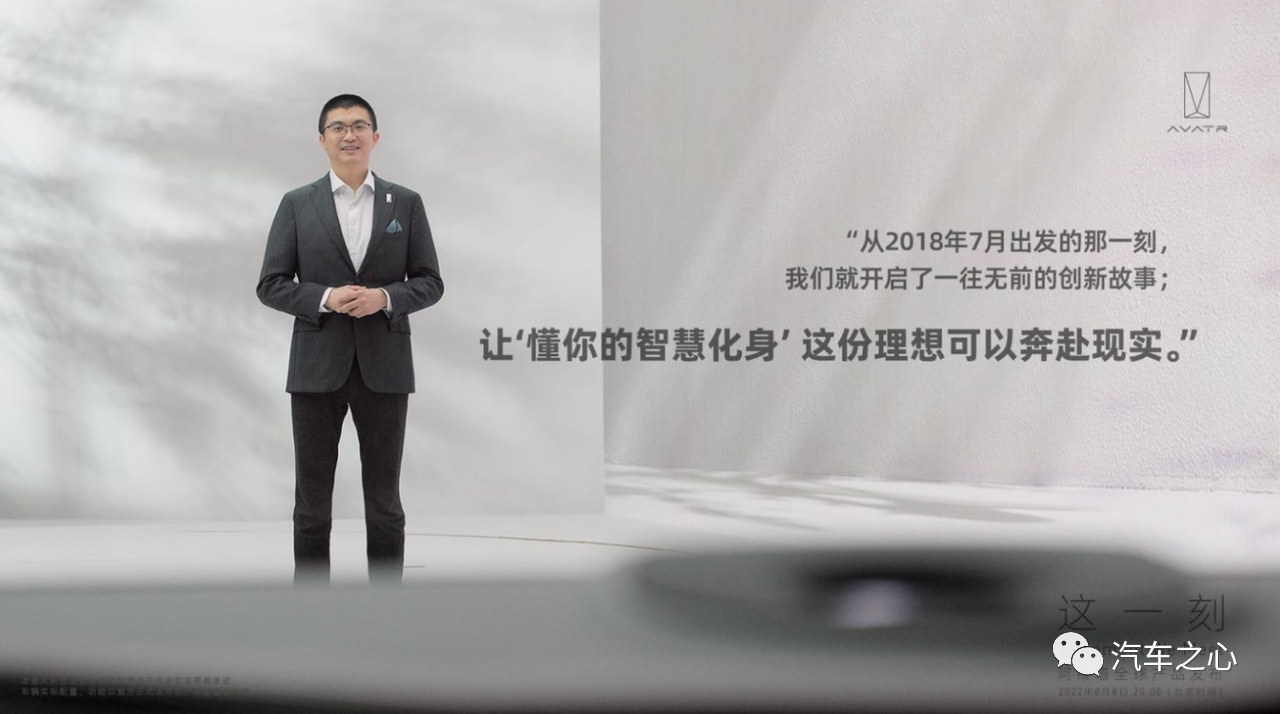
It turns out that Avita did not simply throw the word “high-end” coldly to consumers, nor did it play a vague emotional card. Instead, it truly presents itself to users through design and products.
For Avita, the CHN platform, a groundbreaking smart EV technology platform, not only breaks the traditional cooperation model with automakers as the tower tip, but also injects Avita with the abilities of “hardware + software + digitized touchpoints + smart ecology” as a whole.
Apart from this, in the context of a widespread chip shortage in the industry, the ability to produce cars reflects the automaker’s supply chain management, and the ability to attract users without discounts depends on the product’s own capabilities.
Under these circumstances, Huawei and CATL prioritizing providing blood transfusions exclusively to Avita will inevitably enhance Avita with the latest technologies.
Tan Benhong firmly believes that in order to seize the opportunity in this race, it depends on who moves faster, who has a stronger will, who has greater ability, and who has more partners.
Changan, CATL, and Huawei all have thousands of teams, and in this model, Avita may prove that China still needs high-end brands like Avita.
Automobiles are products of the industrial age, the pinnacle of human and industrial integration, and also a marathon without a finish line.
This article is a translation by ChatGPT of a Chinese report from 42HOW. If you have any questions about it, please email bd@42how.com.
